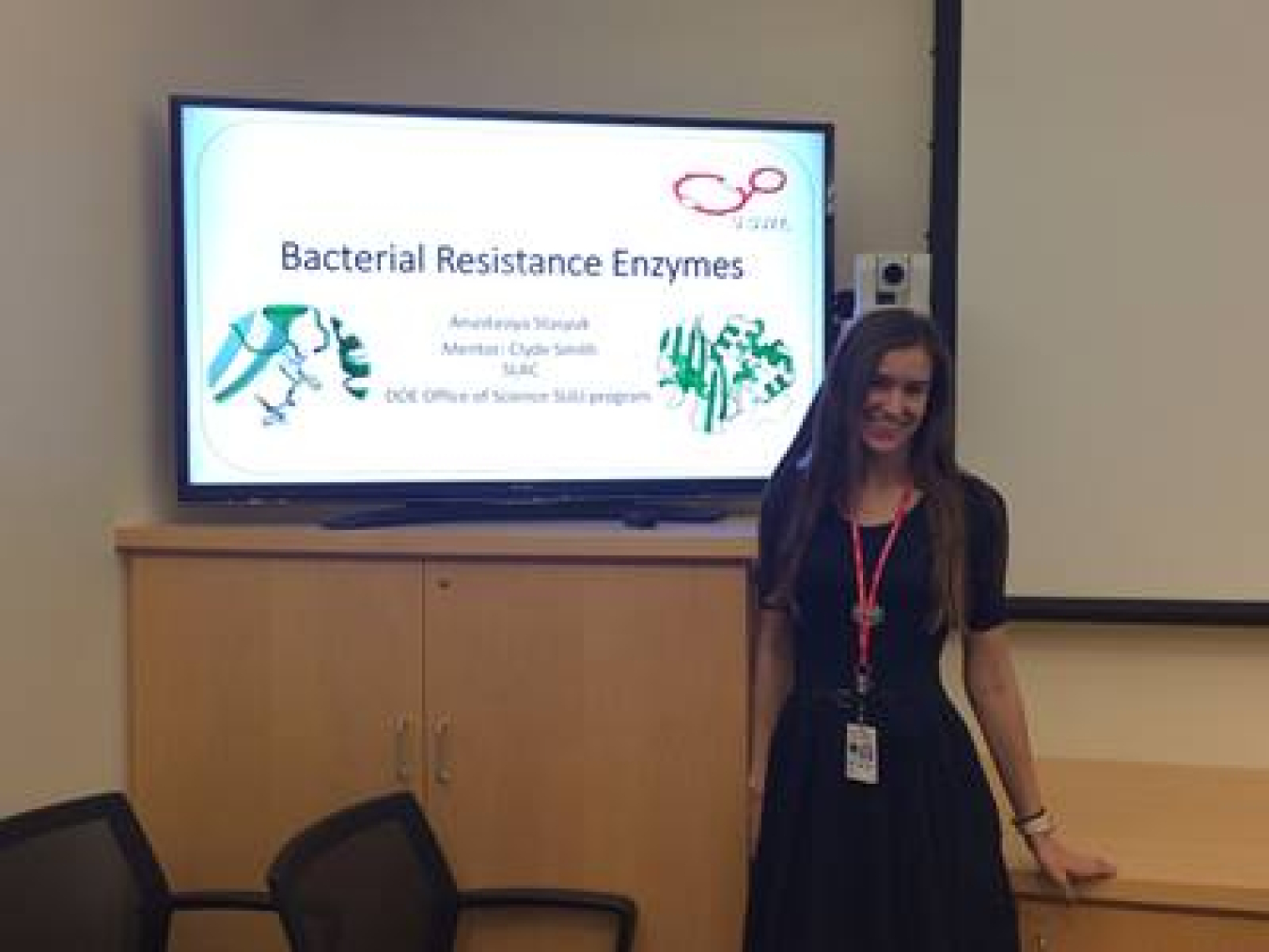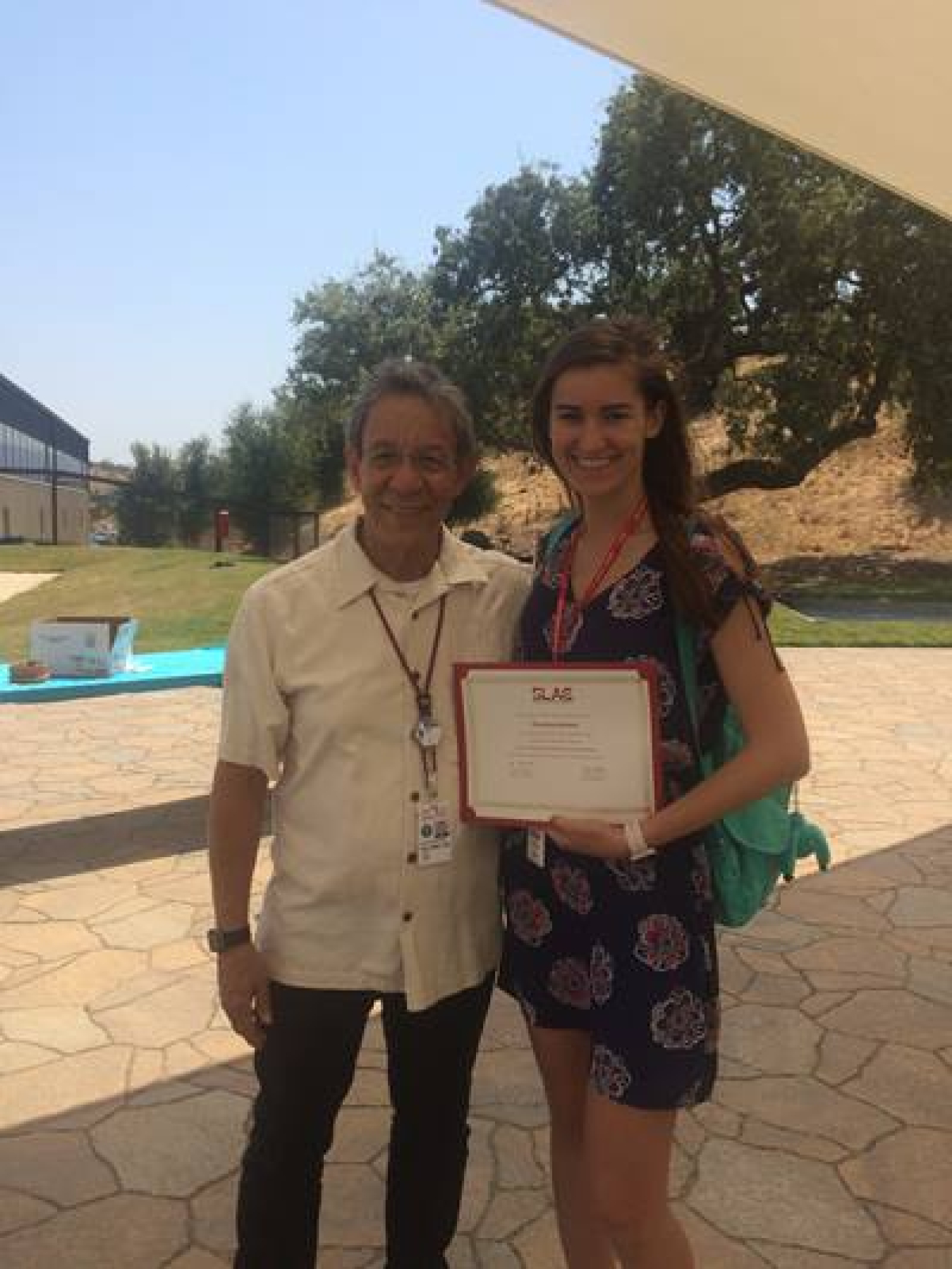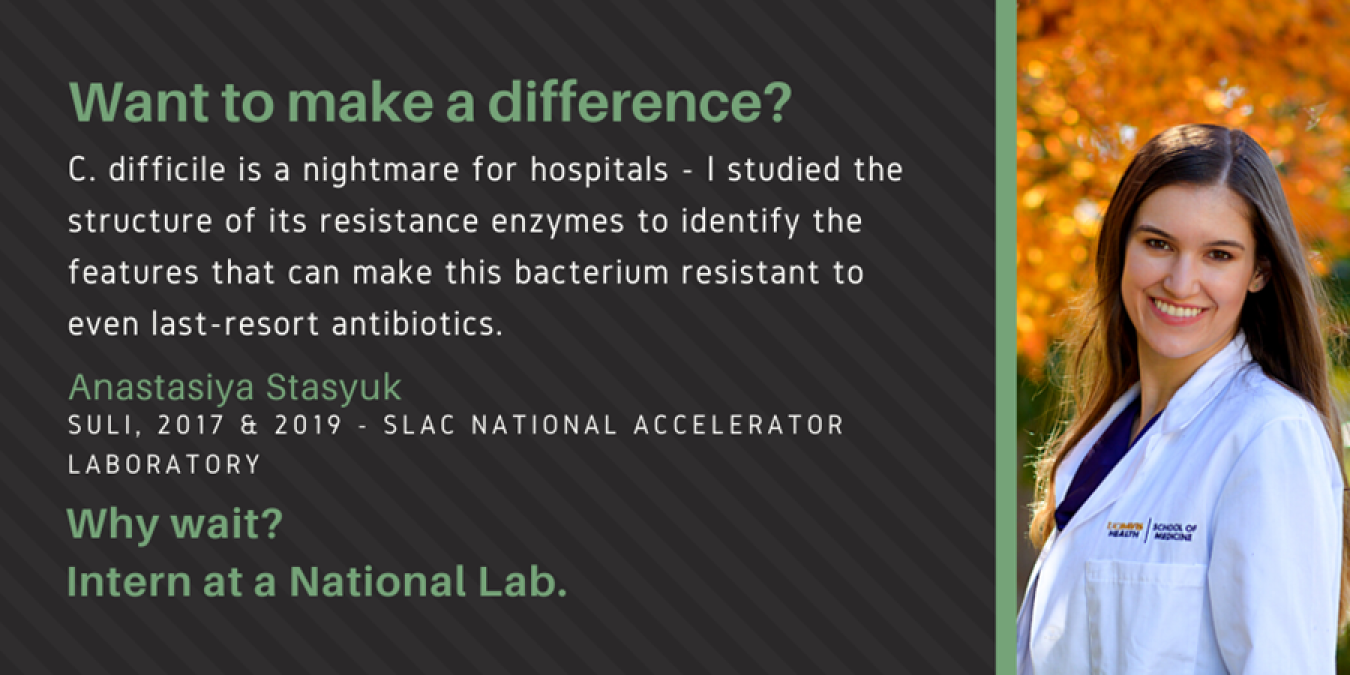Name: Anastasiya Stasyuk; Institution: University of California - Santa Barbara; Program: DOE’s Science Undergraduate Laboratory Internships (SULI); Education Level: Undergraduate Student
January 19, 2023Name: Anastasiya Stasyuk
Internship program: Science Undergraduate Laboratory Internship (SULI)
Year: 2017, 2019
Undergraduate institution: University of California-Santa Barbara
Major: Biology
Host DOE laboratory: SLAC National Accelerator Laboratory (SLAC), Menlo Park, CA
Mentor name: Clyde Smith

From the first day, I dove into reading relevant research papers and crystallography textbooks and learning numerous computational programs with the help of my mentor.
What was your research topic during your internship?
I studied the antibiotic resistance of Clostridioides difficile under the supervision of Dr. Clyde Smith. C. difficile infections are life-threatening, killing approximately 29,000 people per year in the U.S. and adding nearly $4.8 billion to the annual healthcare cost. This bacterium is a nightmare for hospitals because it is resistant not only to antibiotics but also antimicrobial agents such as alcohol-based sanitizers. This makes C. difficile easily transmittable between patients via contaminated hands and instruments.
The goal of my project was to study the structure of C. difficile’s resistance enzymes - the functional components that inactivate antibiotics - to identify the features that allow C. difficile to become resistant to even last-resort antibiotics. I used the synchrotron to collect X-ray diffraction patterns of the resistance enzymes. I then transformed these 2D diffraction patterns into 3D structural models that show the spatial location of each atom within each amino acid making up the enzyme. As a result of my work, I am a co-author of a publication in the Journal of Structural Biology.
What was it like coming to a National Lab for your internship?
I was a SULI intern at SLAC in 2017 and 2019. In 2017, I had just finished my sophomore year of college and, even though I felt slightly anxious about fitting in with a group of accomplished scientists, I was thrilled to be able to study antibiotic resistance using the cutting-edge technology at SLAC. From the first day, I dove into reading relevant research papers and crystallography textbooks and learning numerous computational programs with the help of my mentor. My mentor was helpful and patient, and it was clear that he enjoyed teaching students. When I returned to SLAC in 2019, I did not have any doubts about whether I belonged there. Armed with a microbiology degree, my prior SLAC experience, and research work at my undergraduate institution, I felt at home in this fast-paced setting of diverse academic backgrounds.
I think my biggest success was how much I learned during my internship.
Describe a concern you had while considering or applying to the internship. What advice would you give to help a student with the same concern today?
My concern when I first applied was that I did not have enough research experience. To a student with the same concern, I would suggest that as long as you are willing to learn, you’ll be fine! Everyone I met was friendly and helpful. I asked many questions but never felt like I was slowing the team down.
Think of a time you experienced success during your internship. What did this success look like?
c. In 9 weeks, I learned how to do protein crystallization, collect X-ray diffraction patters using the synchrotron, and use computer programs to create 3D structures. I also learned how to think more scientifically and plan out my research work more independently.
Think of a time you experienced failure during your internship or academic career. How did you feel at the time? How did you deal with the failure and work past it?
For my project I had to grow crystals in different conditions, which was tricky because they are sensitive to their environment. Sometimes crystals would not grow and I would have to restart the process. However, I do not think of this as failure - it was a normal part of the research process. I learned that it is impossible to predict and control everything, so it is important to remain flexible and approach the project from different angles in order to bounce back from mistakes quickly.

Did you make any important personal connections during your internship?
Everyone I met at SLAC was helpful and friendly. My mentor and the SULI director (Enrique Cuellar) are two people I remained in contact with to this day. They have been helpful in giving me research and career suggestions.
What are your hopes for your career?
I am currently a first-year medical student at the UC Davis School of Medicine. I hope to continue conducting research as a student and as a doctor.


